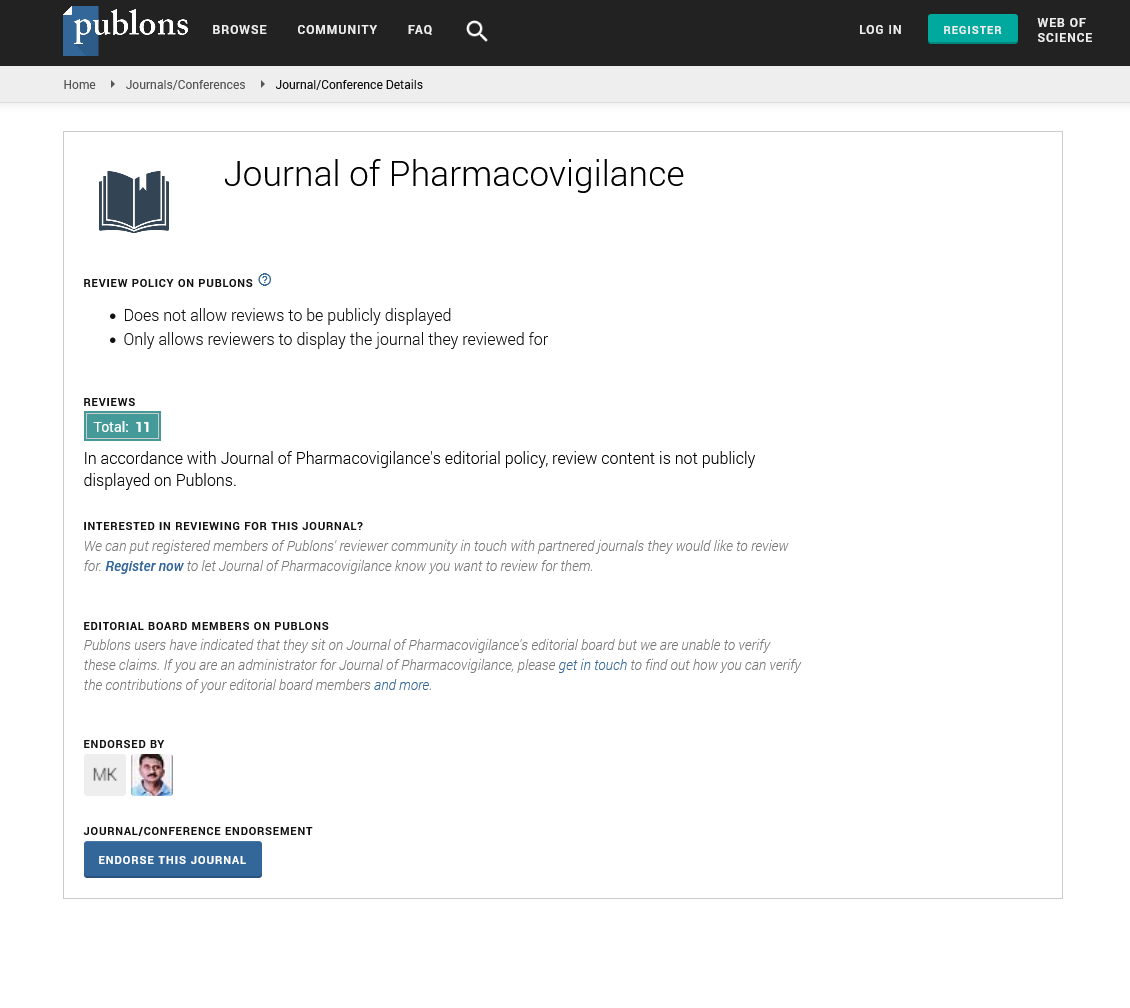Indexed In
- Open J Gate
- JournalTOCs
- The Global Impact Factor (GIF)
- RefSeek
- Hamdard University
- EBSCO A-Z
- OCLC- WorldCat
- Publons
- Euro Pub
- Google Scholar
Useful Links
Share This Page
Journal Flyer

Open Access Journals
- Agri and Aquaculture
- Biochemistry
- Bioinformatics & Systems Biology
- Business & Management
- Chemistry
- Clinical Sciences
- Engineering
- Food & Nutrition
- General Science
- Genetics & Molecular Biology
- Immunology & Microbiology
- Medical Sciences
- Neuroscience & Psychology
- Nursing & Health Care
- Pharmaceutical Sciences
Commentary - (2023) Volume 11, Issue 1
Efficacy of Antimicrobial Resistance and Physiochemical Properties of Drugs
Collignon Nelson*Received: 01-Jan-2023, Manuscript No. JP-23-19792; Editor assigned: 03-Jan-2023, Pre QC No. JP-23-19792(PQ); Reviewed: 17-Jan-2023, QC No. JP-23-19792; Revised: 24-Jan-2023, Manuscript No. JP-23-19792(R); Published: 31-Jan-2023, DOI: 10.35248/2329-6887.23.11.411
Description
Antimicrobial Resistance (AMR) has been defined by the scientific community as the greatest threat to human health, causing increased morbidity and mortality. The reasons behind this phenomenon are complex and solutions can only be achieved by considering a One Health approach that includes the integration and enforcement of human health, veterinary medicine and environmental conditions. The authors wanted to write this review to summarize for the reader three milestones in One-Health that underlie the major issues with which veterinary medicine is primarily concerned in a public health problem that requires careful use of the U.S. Food and Drug Administration has banned most off-label uses of cephalosporins and fluoroquinolones to preserve these antibiotics for human use. Off-label use of antibiotics can pose a public health risk due to potential association with Antimicrobial Resistance (AMR).
Antibiotics, such as antibiotics, are essential to sustaining animal production worldwide by ensuring animal health and welfare and reducing the burden of infectious diseases and mortality. This allows farmers and producers to mitigate productivity losses and ensure the livelihoods of rural communities. However, irrational Antimicrobial Use (AMU) leads to the emergence, transmission, and persistence of antibiotic resistance.
Animal antibiotics excreted in faeces and urine are added to farm litter and subjected to heat treatment under a variety of conditions. For example, roasting (200°C-300°C) is often used to inactivate pathogens in chicken manure, producing a higher quality fertilizer. Antibiotics are also found in sludge from municipal or livestock sewage treatment plants. For ease of transport and storage, they are usually heat dried at high temperatures (70°C-200°C) to reduce water content for disposal or reuse. Trace amounts of antibiotic residues in meat and eggs are also exposed to high temperatures during cooking.
Additionally, emerging waste treatment processes such as pyrolysis and hydrothermal treatment to produce biochar used high temperatures to decompose organic matrices. However, so far, the thermostability and degradation mechanisms of antibiotics have not been studied, and most importantly, there is a lack of understanding of the antibacterial activity of thermal degradation products.
Efficient and selective pyrolysis is usually difficult to achieve because the physicochemical properties of different contaminants are often very different. Decomposition products are often highly complex and highly toxic. These pyrolysis products can be released into the environment, raising environmental pollution concerns. All antibiotics and pyrolysis products in this study were dissolved in nanopure water and measured using a reversed-phase High-Performance Liquid Chromatography (HPLC) system. The thermal stability of veterinary antibiotics varies over the temperature range of 150°C-300°C. Most of them are with the exception of antibiotics which lose their antibacterial activity upon degradation of the parent antibiotic. Concerns about antibiotic resistance have made the chemical structures of fluoroquinolones increasingly complex in development to ensure drug efficacy, and their thermal decomposition products are subject to greater uncertainty.
Conclusion
Our study identifies key factors influencing veterinarians' antibiotic prescribing decisions and highlights key drawbacks among these, there is an urgent need to improve a veterinarian's knowledge of AMR and adopt a one health approach to streamline his AMU at the national level in line with local and international guidelines.
Citation: Collignon N (2023) Efficacy of Antimicrobial Resistance and Physiochemical Properties of Drugs. J Pharmacovigil. 11:411.
Copyright: © 2023 Collignon N. This is an open-access article distributed under the terms of the Creative Commons Attribution License, which permits unrestricted use, distribution, and reproduction in any medium, provided the original author and source are credited.

